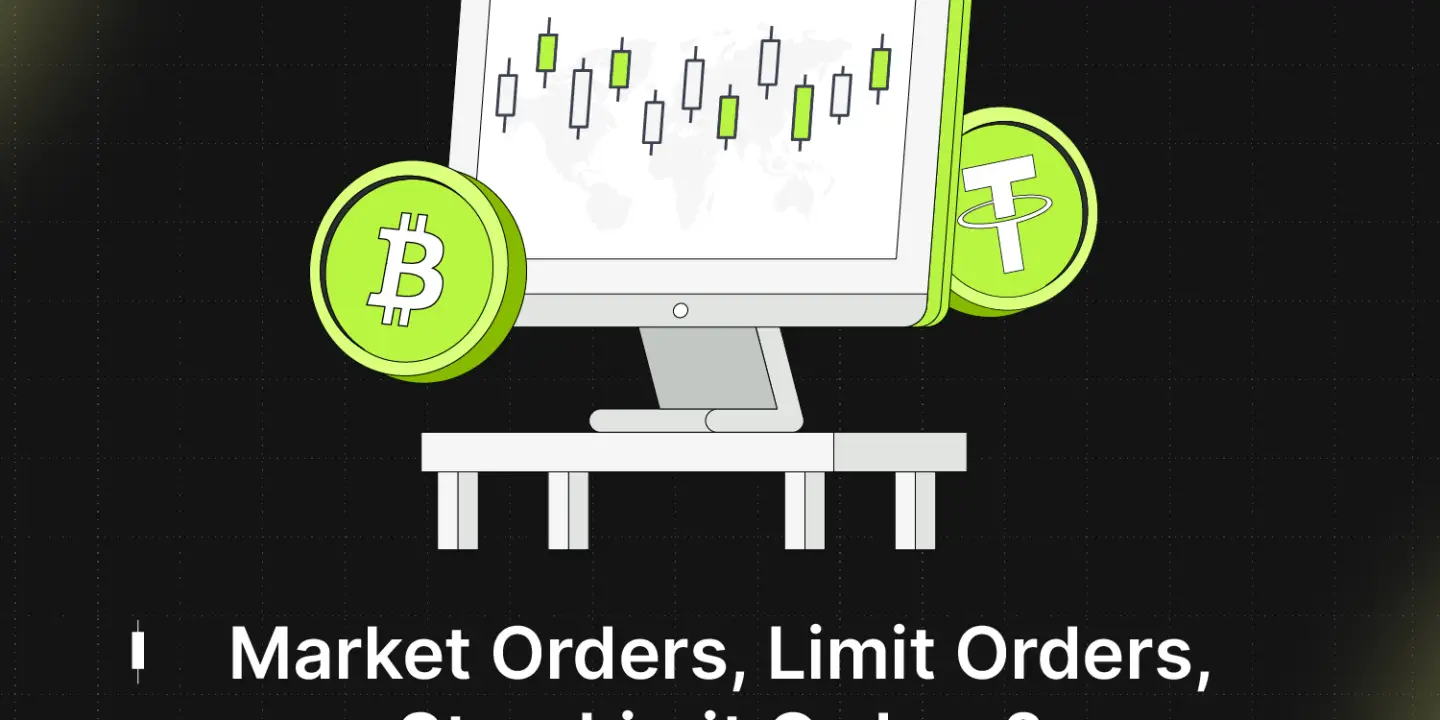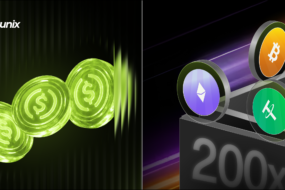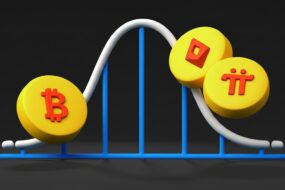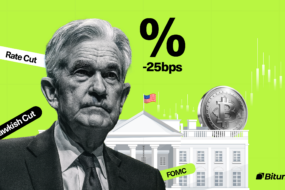
In crypto trading, one of the first things beginners encounter is the order book—a list of buy and sell orders waiting to be executed. To interact with this order book, traders use different types of orders such as market orders, limit orders, and stop orders.
Each order type works differently and has its advantages, disadvantages, and best-use cases. Knowing when to use a market order vs limit order vs stop order can be the difference between successful execution and unexpected losses.
This guide breaks down each type, shows how they work on platforms like Bitunix, and answers the most common questions traders ask about order types.
What Is an Order Book in Crypto?
An order book is a real-time list of buy and sell orders for a particular cryptocurrency on an exchange. It shows:
- Buy orders (bids): Prices and amounts buyers are willing to pay.
- Sell orders (asks): Prices and amounts sellers want to receive.
- Order depth: The total number of orders at each price point.
The order book is the foundation for how market orders, limit orders, and stop orders get executed.
What Is a Market Order?
A market order is an instruction to buy or sell immediately at the best available price in the order book.
- Buy Market Order: Fills instantly at the lowest available ask.
- Sell Market Order: Fills instantly at the highest available bid.
Best for: Speed and guaranteed execution.
Risk: Price slippage if liquidity is low or volatility is high.
Example: If BTC/USDT is showing $50,000, a market buy order will execute near $50,000, but depending on liquidity, the actual fill could be slightly higher.
What Is a Limit Order?
A limit order allows traders to set the exact price at which they are willing to buy or sell.
- Buy Limit: Placed below the current market price. Executes only if the price drops to that level.
- Sell Limit: Placed above the current market price. Executes only if the price rises to that level.
Best for: Controlling the entry/exit price.
Risk: The order may not fill if the price never reaches the limit.
Example: If BTC is at $50,000, you can set a buy limit at $48,000. It will only execute if the price falls to $48,000 or below.
What Is a Stop Order?
A stop order is an order that triggers once the market reaches a specified stop price.
There are two main types:
- Stop-Market Order: Converts into a market order once the stop price is hit. Execution is guaranteed, but the final price may vary.
- Stop-Limit Order: Converts into a limit order once the stop price is hit. Execution is not guaranteed, but it gives price control.
Best for: Risk management (stop-loss) and breakout strategies.
Example: You hold ETH at $3,000. You set a sell stop-market order at $2,800. If ETH drops to $2,800, the order triggers and sells at the next available price.
Market Order vs Limit Order vs Stop Order
| Feature | Market Order | Limit Order | Stop Order |
| Execution Speed | Instant | Only if price matches | Only if stop price is triggered |
| Price Control | No | Yes | Partial (stop-limit) |
| Best Use Case | Fast entry/exit | Buying dips, selling rallies | Stop-loss or breakout strategies |
| Risk | Slippage | No guarantee of fill | Non-execution (stop-limit) or slippage (stop-market) |
In short:
- Market order = fastest execution.
- Limit order = best price control.
- Stop order = risk management tool.
Limit vs Stop vs Stop-Limit
- Limit Order: Executes at a set or better price.
- Stop-Market Order: Triggers a market order when the stop price is reached.
- Stop-Limit Order: Triggers a limit order when the stop price is reached.
Stop price vs limit price:
- The stop price is the trigger.
- The limit price is the maximum/minimum price you’re willing to trade at once triggered.
Buy Limit vs Buy Stop | Sell Stop vs Sell Limit
- Buy Limit: Buy below current market price.
- Buy Stop: Buy above current market price (e.g., breakout entry).
- Sell Limit: Sell above current market price.
- Sell Stop: Sell below current market price (e.g., stop-loss).
Example:
- BTC trades at $50,000.
- A buy stop at $52,000 means buying if BTC breaks higher.
- A buy limit at $48,000 means buying if BTC dips lower.
When Should Traders Use Each Order?
- Market Orders:
- When execution speed is more important than price.
- During highly liquid market hours.
- Limit Orders:
- When aiming for a specific entry/exit price.
- In volatile markets to avoid slippage.
- Stop Orders:
- To protect profits (trailing stop).
- To prevent large losses (stop-loss).
- To enter trades on breakouts (buy stop).
Practical Examples
Market Order Example
You want to buy 100 USDT worth of BTC instantly. You place a market order, and it fills at the current best available price in the order book.
Limit Order Example
You want to buy ETH if it drops to $2,500. You place a buy limit at $2,500. If ETH hits that price, your order executes.
Stop Order Example
You are long on BTC at $40,000. To prevent losses, you place a sell stop-market order at $38,000. If BTC falls to $38,000, your order executes at the next market price.
Advantages and Disadvantages
Market Orders
- ✅ Guaranteed execution
- ❌ Risk of slippage
Limit Orders
- ✅ Precise price control
- ❌ May not execute
Stop Orders
- ✅ Good for risk management
- ❌ Execution risk (stop-limit) or slippage (stop-market)
Conclusion
Mastering order types is a core skill in crypto trading.
- Market orders are for speed.
- Limit orders are for precision.
- Stop orders are for protection and strategy.
By understanding how market order vs limit order vs stop order works, traders can balance speed, control, and risk. Whether you’re buying dips, selling into rallies, or protecting profits, choosing the right order type ensures smarter and safer trading decisions on platforms like Bitunix.
Frequently Asked Questions (FAQ)
1. What is an order book in crypto?
An order book is a list of buy and sell orders on an exchange, showing liquidity, price levels, and depth.
2. What is a market order?
A market order buys or sells immediately at the best available price.
3. What is a limit order?
A limit order executes at a specified price or better, but execution is not guaranteed.
4. What is a stop order?
A stop order triggers once the market hits a stop price, converting into either a market or limit order.
5. Market order vs limit order vs stop order?
Market = instant execution. Limit = price control. Stop = conditional execution triggered at stop price.
6. Limit vs stop vs stop limit?
Limit = fixed price order. Stop-market = triggers at stop price with market execution. Stop-limit = triggers at stop price with limit execution.
7. Stop market vs stop limit?
Stop-market guarantees execution but not price. Stop-limit gives price control but may not execute.
8. Sell stop vs sell limit?
Sell stop = sell below market to prevent loss. Sell limit = sell above market to lock in profit.
9. Buy stop vs buy limit?
Buy stop = buy above market to catch breakouts. Buy limit = buy below market to catch dips.
10. Why use a stop-limit order instead of a limit order?
A stop-limit helps protect profits or manage risk by only activating if the market reaches your stop price.
11. Are stop orders a good idea?
Yes, when used for risk management. They help traders set automatic exits without constant monitoring.
About Bitunix
Bitunix is one of the world’s fastest growing professional derivatives exchanges, trusted by over 3 million users across more than one hundred countries. Ranked among the top exchanges on major data aggregators, Bitunix processes billions in daily volume and offers a comprehensive suite of products including perpetual futures with high leverage, spot markets, and copy trading. Users can trade bitcoin and other major cryptocurrencies on the platform, taking advantage of advanced trading features. Known for its Ultra K line trading experience and responsive support, Bitunix provides a secure, transparent, and rewarding environment for both professional and everyday traders. Bitunix Academy adds structured lessons so you can build skills while you trade.
Bitunix Global Accounts
X | Telegram Announcements | Telegram Global | CoinMarketCap | Instagram | Facebook | LinkedIn | Reddit | Medium
Disclaimer: Trading digital assets involves risk and may result in the loss of capital. Always do your own research. Terms, conditions, and regional restrictions may apply.












